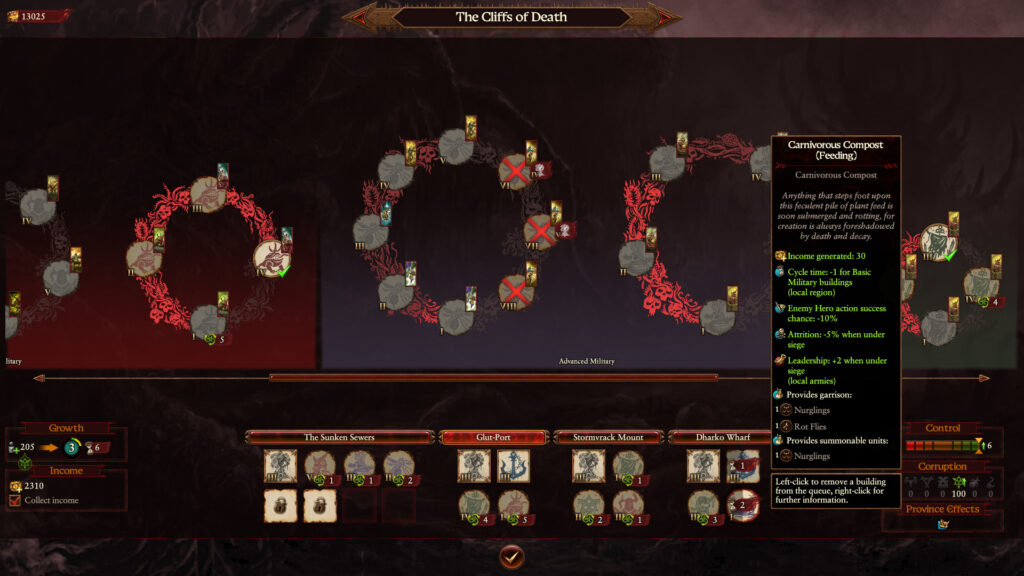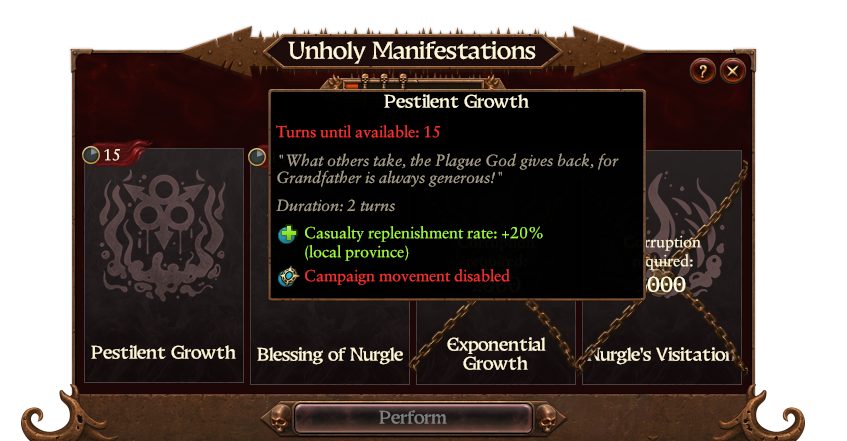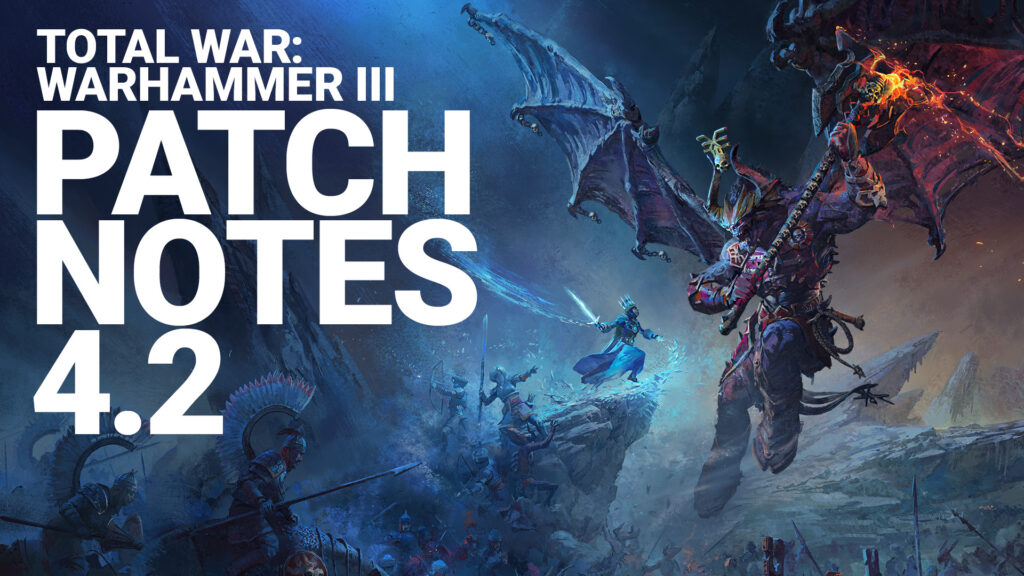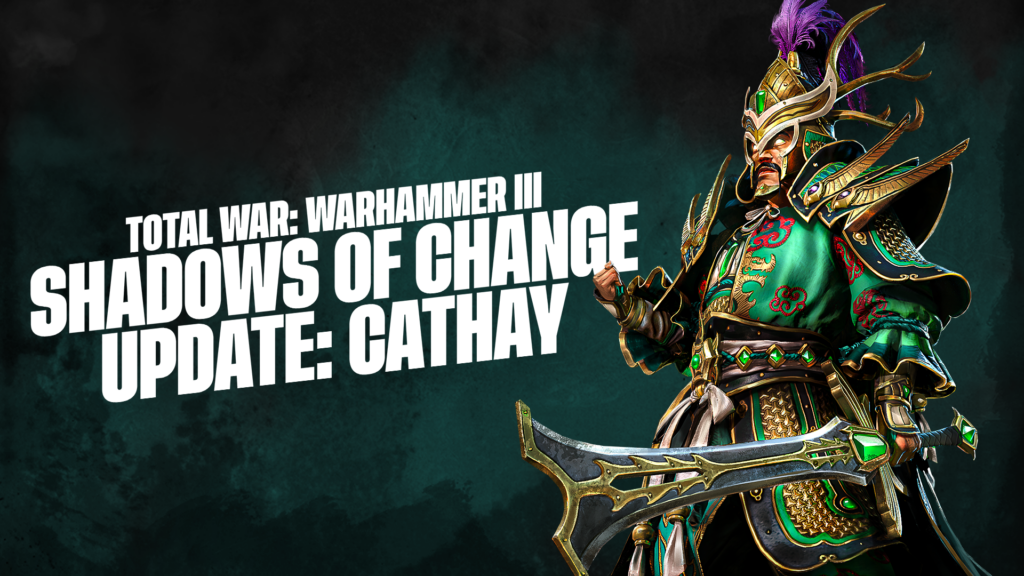
Plagues, pestilence, boils, and bulbous buboes – the joy of playing Nurgle in campaign
Double bubble, toil and trouble, what marvelous creations will be pulled from the Plague Cauldron today? Ah, it’s the Nurgle campaign mechanics – a delicious surprise for all, be they followers of Nurgle or his soon-to-be-infected enemies. As the premiere spreaders of joy, happiness, and disease in the Warhammer world, the laughing, bountiful forces of Nurgle are all about covering the campaign map in their sickness.
Nurgle is also a god of decay, death, and rebirth, and that is fully represented in his glorious ways. Be it buildings, recruitment, or heroes, everything’s just a little bit different for Grandfather Nurgle as you grow and conquer. On that note, in current world circumstances we can understand if talk of horrific plagues spreading is sensitive. Inside a videogame, it’s the fun of inciting chaos across a digital world, and we think you’ll enjoy it.
As with our other Daemon factions, these are the mechanics for Nurgle as a race, while Ku’gath Plaguefather’s specifics will be covered in his own post. WARHAMMER III, much like the plagues of Nurgle, is still evolving and changing, so keep in mind that numbers could be different come launch day.
Death & Rebirth
Nurgle does not spread akin to a normal faction. There are no labourers building great monuments to their gods, no scribes researching their latest magical obsession, not even the gruesome fighting pits of a Khornate bloodbath disguising itself as a town or city. Grandfather’s people need not gather to worship nor prove themselves with acts of devotion – he runs through their blood, after all.
No, settlements infected by Nurgle are closer to growths that blight the landscape than real towns. Fields of rotting flowers, mushrooms and creeping vines – and at the center of it all, a great tree pulsing with life, death, and infection.
In this manner, Nurgle buildings are not upgraded, they grow, flourish, die, and are reborn. Each building will evolve to its next phase over a number of turns, eventually withering and starting again from a base state. At each point its effects will be different, and each new evolution will add units to the recruitment pool – which we’ll come on to in a second.
Say you choose a building slot to house a Rancid Aloe. After a few turns of building, it will complete and add a Forsaken of Nurgle unit to your pool, the secretions from the plant having been used to fuse metal and flesh in a manner pleasing to Grandfather. It will then begin to pollinate, and four turns later enter the germination phase. This increases the income the building generates and adds another unit of Forsaken to your pool. Another four turns, another boost in income, and this time a Spawn of Nurgle.
This is true of all Nurgle buildings, be they for infrastructure or provide units. Indeed, many do both, spewing Nurglings as a byproduct even as their primary purpose is to support the region by infecting the Earth itself, increasing Control. In addition, various buildings, technologies, plagues, and so on can decrease the time between each phase, making the production of units quicker.
On that topic, Nurgle does not recruit units in the standard way. Rather than waiting several turns for a regiment to become ready to fight, groups of daemons are summoned directly to an army, raring to go. Units hired this way do not start at full strength, replenishing over time – another thing that can be buffed by various Nurglish skills and technologies. They can also be recruited in any neutral or friendly territory from a global pool, pulled from the Chaos Realms to help in the fight. There are caps on how many of each unit can be in the global pool, but as you approach the late game you are going to be able to fill and refill armies at an alarming rate.
As you can imagine, this completely changes basically everything about how you build armies, make war, plan routes, and your priorities for settlements. You will have a lot more resources to spend, as you don’t need to regularly upgrade buildings, but each new settlement will cost more to get some basic stuff going. Once your unit stockpile is gone, refilling it takes more time, but it can happen extremely quickly once you have a large number of settlements.
All this is also only half the equation…
Plagues & Infections
Central to Nurgle’s campaign mechanics, and indeed his lore, purpose, and very existence, is the creation and spread of new plagues. His forces, their settlements and lords, are locuses of rot, spinning webs of flesh and disease that destroy and rebuild everything around them. Grandfather Nurgle and his many followers believe, without a shadow of a doubt, that they are bestowing glorious gifts upon the world, that their enemies will be happier and more beautiful with new life bubbling across their skin. You, as the player, get to create all that, and let it pass through your own armies, enemies, and settlements on both sides.
The work begins in the Plague Cauldron, a new special screen only accessible to Nurgle players. Here, various plagues can be concocted out of the bases and symptoms you have unlocked. The broad rules are that negative effects will be applied to infected enemy settlements and armies, while positive ones will hit your own towns and forces. All plagues give additional Infections (explained in a moment) and Nurgle corruption every time they are spread to a new target – with one exception. Here are the five starter plagues:
- Pox – decreases cycle time for friendly buildings, increases growth for friendly settlements.
- Buboes – reduces casualty replenishment rate and increases attrition while under siege within enemy settlements.
- Ague – applies attrition to enemy armies and reduces their campaign movement range.
- Rot – instead of giving Infections whenever it is spread, adds a unit of Nurglings to your recruitment pool.
- Palsy – reduces melee attack of enemy armies.
A plague consists of one of those bases and then up to two additional symptoms. Distributing it to the world can be done in two ways – directly, or via plague cultists. Doing it directly can only be done on friendly settlements and armies, but at a significantly reduced cost of Infections. Infections are gathered from spreading plagues, post-battle events, dilemmas, and so on. Each additional symptom on a plague increases the cost by a certain amount.
Plague Cultists are new hero units that exist solely to spread the plague to neutral or enemy armies or settlements. They cost significantly more to create, but there is no stopping their infection once they reach their target. Spreading the plague destroys the cultist, and only one plague may be infecting one particular thing at a time – be it cultist, army, or settlement. Naturally, friendly AI factions won’t be delighted if you start spreading plagues throughout their territory.
Once a plague is in the world it has a chance to spread between settlements and armies that are in close proximity. Battles between armies will always spread the plague from one to the other. Spreading plagues with particular bases is how you unlock new symptoms, as well as through technologies. The chance for plagues to spread and how many turns they last is all improvable via various means. The intent is that at any time you will have a variety of plagues spreading throughout the world, often far beyond your control or means. They may loop back to your own settlements and armies at surprising times, or be spreading through an entire enemy empire without you necessarily meaning it to.
Finally, once you have unlocked various symptoms, there are recipes. These are particularly powerful plagues, such as Nurgle’s Rot and the Black Plague, that come with additional benefits to duration and chance to spread.
Right, if the word ‘plague’ hasn’t lost all meaning to you due to overuse, let’s continue…
Unholy Manifestations & Cults
As with our other daemon factions, Nurgle has access to the Unholy Manifestations and Cult mechanics. Quick refresher: Unholy Manifestations are special actions unlocked by having a certain level of global corruption for your Chaos God, while Cults are special building slots unlocked in other faction’s settlements by having high corruption there.
Nurgle’s Unholy Manifestations are:
- Pestilent Growth
- Unlocked from the start.
- Gives a 20% replenishment rate boost to an army for two turns, while disabling their campaign movement.
- Blessing of Nurgle
- Requires 1000 global Nurgle corruption
- Increases the chance of plagues spreading in the local province by 30% for three turns, but disables campaign movement.
- Exponential Growth
- Requires 2000 global Nurgle corruption
- Increases growth in the local province by 200 and decreases recruitment costs by 20% for target army for three turns.
- Nurgle’s Visitation
- Requires 3000 global Nurgle corruption
- After three turns, gives a random plague to every army and settlement in the same province as target army. Disables campaign movement for the army while it charges.
Note that both growth and replenishment are particularly useful to Nurgle, as their main buildings are the only ones that require upgrades and control how far their other buildings go into their respective loops. Naturally, replenishment helps newly recruited units get up to strength quickly – this could also re-prioritise your lord skill tree choices, for example.
Also, all these Manifestations are improved if Nurgle is in Ascendancy in the Great Game. Ascendancy is weighted based on the number of settlements, armies, and amount of favour gathered by all the factions dedicated to that God. It can still switch between any of the four when it changes, but the better you and your Godly allies are doing, the more likely you are to be in Ascendancy.
Meanwhile for the Plague Cults the following buildings are available:
- Shelter
- Gives 25 infections per turn.
- Refuge
- Gives 40 infections per turn if growth in the region is at 200 or more.
- Hospice
- Gives 40 infections per turn if any Lord is present.
- Colony
- Gives a random plague to the settlement, but destroys the cult.
It’s of note for both of these that spreading corruption is easier and quicker for Nurgle factions over the other Chaos factions. Plagues naturally spread corruption, can be upgraded to spread more, and various characters and buildings have big boosts to spreading as well. This means quicker manifestation unlocks and more cults globally.
Tech Tree
Nurgle’s tech tree has similarities with Khorne, brothers in destruction as they are, with several pods of seven technologies each, requiring four to be researched to move on to the next. This gives you a lot of options on how you want to progress and what to unlock first, as well as how important moving on to the next pod is versus picking up a particularly useful tech.
As well as the normal unit upgrades, diplomacy, and such forth, several Nurgle techs improve plagues in various ways, including unlocking new symptoms. Ironically similar to his major rival, Tzeentch, there are also several techs that add spells to Great Unclean Ones, making them powerful casters as well as oozing piles of rot.
On the note of spells and magical abilities, Nurgle has access to various army abilities. These are unlocked through technology and are charged in-battle based on how much damage your units are taking. Each also has the Chain property, meaning that it will target a specific unit then spread to nearby units, rather than targeting an area. This can be powerful or a drawback, depending on how you use it, but certainly fits the theme of contagions spreading through both armies in real time.
Also of note is the big variation between research times depending on the strength of various techs. Moving between each pod could take a significantly different amount of time depending on which techs you go for. Experiment! Such is the joy of Nurgle.
Spreading the infection
That’s all the different ways to bring joy and bulbous happiness to the world as Nurgle. He feels almost completely different to play to other races due to the total differences in settlements and recruitment, and we can’t wait for you to get your hands on it February 17th 2022.








